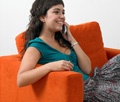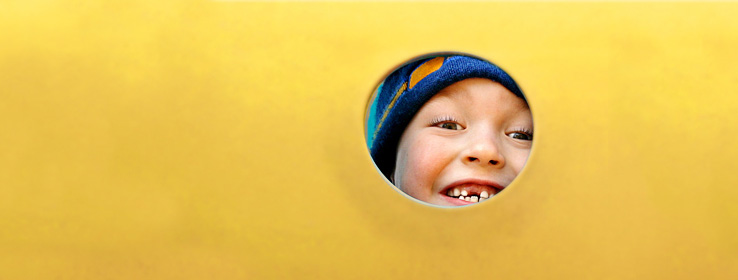Are there actual age-related color preferences, or are they the result of generations of accumulated cultural and age bias?
Burdened with the speculating mind of a design architect, it's hard for me to travel through the built world without constant distraction. Open lots are blank canvas for imaginary projects. Historic buildings beg to be dissected by period and style. And newly constructed buildings demand some kind of analysis. For this reason, when traveling with friends and family, I'm not allowed to drive.
Recently, a handful of new buildings have sprung up in my urban neighborhood in south Minneapolis that keep me thinking long after I park the car and unload the groceries. A new children's hospital sports shimmering walls of iridescent metal panels in vibrant blues, reds and yellow-greens. A senior housing project down the road is predictably clad in brown brick and beige stucco. In the park, new playground equipment blares out across the verdant green turf in glossy primary colors: red, blue and yellow. And a hip hotel downtown has a lobby lined with inky black walls punctuated by white patent leather furnishings, purple rugs, and crystalline lighting in fuchsia and lavender.
What strikes me is how the chosen color palettes of these diverse building types seem to align so neatly with our preconceptions of the age of the user. Pure, bright colors are for children and adolescents. Gothic black mixed with eye-popping hues for young professionals. Earth tones for the senior set. Compare these architectural colors against the enduring fashion trends for these age groups (or product packaging or website designs), and the correlation builds steam.
Is this color bias mere happenstance? A conspiracy? To put it in philosophical terms: Are we, as design professionals, slavishly adhering to cultural stereotypes of color preference based on age, or is there some biological or psychological bias we intuitively obey?
For me, the mere thought that our aesthetic predilections are predetermined by our demographic profile is disconcerting. Can it really be true, for example, that only young people are drawn to Jackson Pollock paintings, or that only retirees would buy a Norman Rockwell wall calendar? (I get one free each year from my Realtor. Is he trying to tell me something?)
According to a mounting pile of research on color preference since the 1940s, evidence seems to indicate that members of discrete age groups really do exhibit collective preferences. In a recent (2003) online research project conducted by Joe Hallock, color preferences have been shown to change with age in regard to favorite as well as least favorite color. Not surprisingly, the findings across multiple studies corroborate many of the color choices made in my neighborhood examples.

In general, children prefer warm and bright colors – red, orange, yellow and pink – because they associate these colors with positive feelings and high energy. Conversely, children associate dark colors such as brown, purple and blue with sadness and negative emotions.
The most striking difference between children and adults is the shift from a warm to a cool color bias. Psychologists have known for a long time that the majority of adults choose blue as their favorite color, with green and purple also landing in the top favorite list. Meanwhile, red, the hands-down favorite color for 3-year-olds, quickly drops to the middle of the pack by early adulthood.
Adults also bring more baggage with them, rejecting certain colors based on ingrained social conventions and symbolism. Black suggests mourning and grief, but also mystery and strength. Red is both spirited and alarming – a color you'll never see on the inside of a hospital.
Clearly, tracking color favorites represents only a limited perspective on the kind of spaces people will be attracted to. My favorite color, for example, is yellow. Yet in my entire house I have only one yellow object (a sofa) that is not a Post-it® note. And while blue is the favorite color of most Americans, its impact has influenced corporate logos much more than residential interiors – a domain where off-white, beige and sage green hold mass appeal.
While color biases by age groups might be scientifically verifiable, I will continue to argue that the effective use of color in architecture and interior design is driven more by context and cultural conventions than by DNA and the vagaries of aging. And though I have yet to receive an invitation to join AARP, I will continue to hang up my Norman Rockwell calendar – as I always do, proudly – in my basement workroom.










